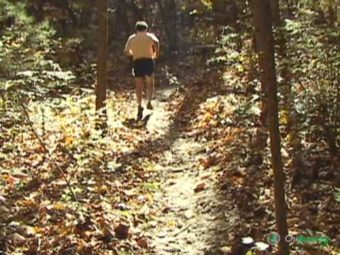What does the midfoot landing get you? Do you know when your foot makes first contact with the ground while you’re running? Most runners do not pay attention to how they run until they start experiencing discomfort. If you’re a conventional runner, chances are you are pushing off with your toes and throwing your leg as far forward to cover the most ground. Upon extending your leg forward, your knee is straight and the heel makes contact first with the road coming at you. The preliminary impact absorbs the force of the road coming at you and it is then distributed up the leg. If there is any misalignment, the potential for a repetitive injury pattern is greatly increased.
Consider a runner who is running a ten-minute pace has a six-mph impact that must be absorbed. If that runner is running a 180 stride per minute cadence, that is well over 1800 impacts to the body during that mile. You can begin to understand why runners have injuries. After the heel briefly breaks the forward momentum, a conventional runner must now engage their larger leg muscles to pull themselves forward. Really not very efficient. And because they are engaging increased muscle usage, a chance of a pulled muscle is also increased.
If the runner learns to land with a midfoot landing several things will happen that will help reduce the likelihood of a potential injury. First, by having the knee bent and not locked straight the joint is able to help dispel some of the impact without incurring injury. Bending the knee to help absorb a force is what the joint is supposed to do. Think about jumping off a platform you wouldn't want to land with locked knees. Keeping the knee bent prevents the foot from over-striding. This shorter stride allows for quicker foot turnover which reduces the amount of ground time. The less time on the ground the less muscle engagement which equals reduced potential for injuries. If the individual learns to lead with their core while leaning from their ankles, they are being assisted with their forward movement by gravity. As they learn to relax and allow gravity to move them they become more efficient and are able to go further with less effort.
All this reduced impact because of a midfoot landing. But how do know if you are landing midfoot? Hiring a couch or video analysis is great way to discover how your feet meet the ground. Another way to tell is by the wear pattern on your shoes. If the heels are worn down you are a heel striker. Another way to find out is to take a running workshop and learn how to feel the difference. The transition to midfoot landing will take some time to become a habit but it will provide you a lifetime worth of running without pain. Taking a ChiRunning Workshop will get you started well on your way towards going from being a heel striker to landing with a midfoot.




